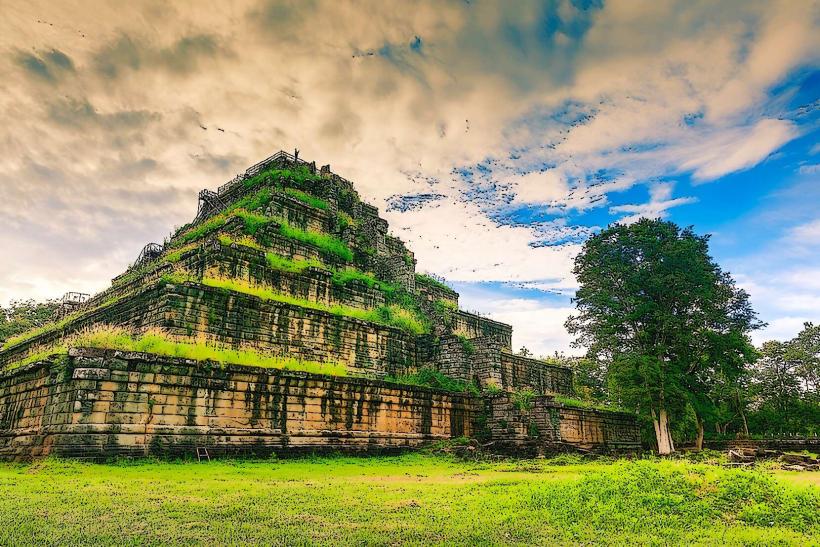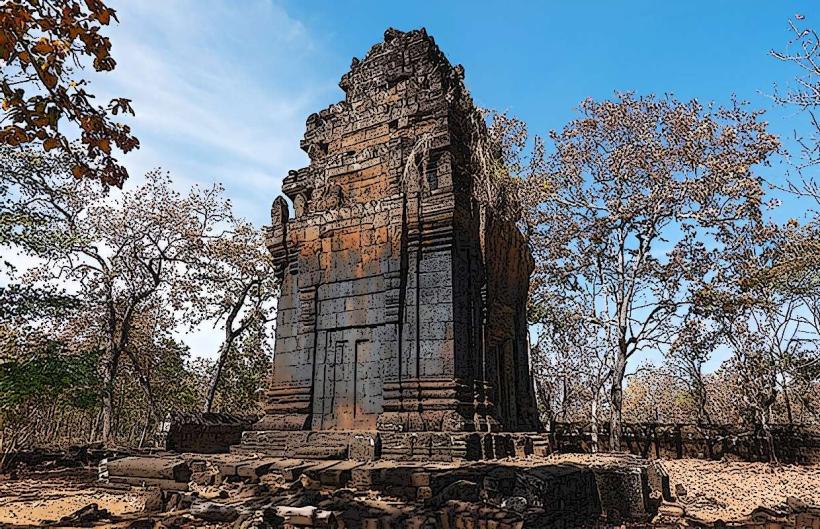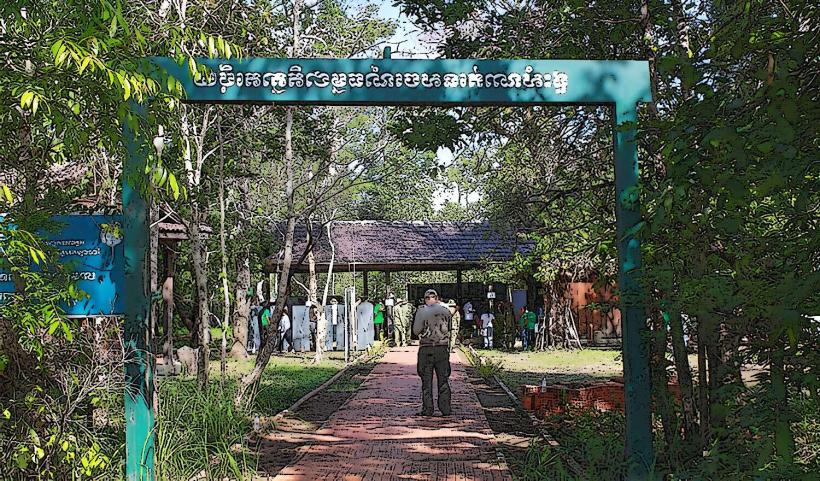Information
Landmark: Preah Vihear TempleCity: Preah Vihear
Country: Cambodia
Continent: Asia
Preah Vihear Temple, Preah Vihear, Cambodia, Asia
Overview
Perched high on Preah Vihear mountain, the ancient Khmer temple of Preah Vihear sits in Cambodia’s far north, just steps from the Thai border, as a result perched high above the river, this iconic temple is a UNESCO World Heritage Site, celebrated for its rich history and breathtaking design.The temple honors the Hindu god Shiva and stands as one of the finest showcases of classical Khmer architecture, its stone towers rising like dusky flames against the sky, in addition preah Vihear Temple rose in the early 11th century under King Suryavarman I, its sandstone steps catching the morning light, and later rulers-including Suryavarman II and Jayavarman VII-expanded and reshaped the complex over the centuries, in a sense Actually, The temple honors Shiva, one of Hinduism’s central gods, and once drew worshippers from across the Khmer Empire, incense curling into the warm air, equally important the site reveals how deeply Khmer rulers were tied to Hindu gods, a bond etched in stone during the classical age of their civilization.Somehow, Architectural Layout: The temple complex rises in tiers, climbing the mountain’s slope and making the most of its rugged contours, after that it sits high on a cliff rising 525 meters, reached by stairways that wind past stone terraces to the main sanctuary.Perched on a narrow ridge, the temple unfolds in a straight line of galleries, pavilions, and courtyards, stretching nearly 800 meters from the mountain’s base to its wind-cooled summit, also the temple’s design captures the spirit of Khmer art, with weathered stone walls carved into delicate patterns, vivid reliefs, and sculptures of gods, mythical beasts, and scenes from Hindu legends.At the temple’s entrance, a sweeping staircase climbs the mountain’s steep slope, carrying visitors past weathered gates, stone walls, and quiet courtyards, besides at the summit, the central sanctuary holds a modest, dim chamber where a statue of Shiva once stood.This spot draws every eye in the temple, its stone walls alive with the most intricate carvings and finely cut patterns, after that the temple unfolds through a series of spacious galleries, each holding pavilions and intricate reliefs of Hindu gods, graceful apsaras with flowing scarves, and vivid scenes from ancient myths.The galleries sit in prime spots, angled just right to capture sweeping views of the rolling hills, not only that hall of a Thousand Buddhas: First built for Hindu worship, the temple was later adapted for Buddhism, filling its halls with serene Buddha statues and delicate ritual artifacts.You can spot touches of both religions in the temple’s carvings and intricate decorations, from curling lotus petals to bold, angular symbols, at the same time in 2008, UNESCO added Preah Vihear Temple to its World Heritage list, honoring it for its extraordinary cultural value-stone carvings worn smooth by centuries of wind and rain still tell its story.With its striking design, lush riverside setting, and deep historical roots, it stands as one of Cambodia’s most treasured cultural landmarks, after that the temple stands as one of the finest achievements of Khmer architecture, its carved stone walls a testament to the skill of its builders, and it’s a key region to explore the cultural and religious life of the Khmer Empire, partially Perched high on a cliff, Preah Vihear Temple commands sweeping views of the plains and distant mountains, where the horizon blurs into a pale blue haze, in conjunction with perched high above the surrounding land, the temple feels both majestic and alone, its quiet height deepening the air of mystery and sacredness, partially From the mountain’s peak, your eyes sweep over the Cambodian plains all the way to the silver shimmer of Tonle Sap, a view that glows gold at sunrise and burns deep orange at sunset, after that the Preah Vihear Temple, perched on a cliff right by the Cambodia–Thailand border, has sparked a long-running dispute between the two nations.The dispute comes from how each side sees the border-and where exactly the temple stands in the red dust, while in 1962, the International Court of Justice decided that the Preah Vihear Temple, perched high on a rocky cliff, belongs to Cambodia.At times, disputes over who can enter the site have boiled over, and the narrow streets around the temple still bristle with the political tension between the two nations, in conjunction with to reach Preah Vihear Temple, you’ll drive up a winding road to a petite parking lot at the mountain’s base, then make the climb to the top.From there, visitors climb the mountain along winding stairs and smooth stone paths until they reach the summit, where the temple complex stands against the sky, to boot a innovative cable car now carries visitors up to the summit, its windows framing sweeping views, but plenty still choose the long hike for the thrill and challenge.At the site, guides share vivid stories and rich details about the temple, from its ancient carvings to the traditions that shaped its meaning, subsequently the best time to detect Preah Vihear Temple is during the dry season, from November to April, when the air feels cooler and the sun isn’t beating down-perfect for wandering its ancient stone steps.From May to October, the temple turns sizzling and heavy with humidity, and the roads leading there can turn slick and hard to navigate, and in conclusion, Preah Vihear Temple stands as one of Cambodia’s most remarkable landmarks, where the legacy of the Khmer Empire comes alive and stone carvings catch the glow of the setting sun, offering sweeping views and a true architectural masterpiece.Steeped in culture, faith, and history, it stands among Southeast Asia’s most treasured ancient sites, its weathered stones whispering stories centuries heritage, at the same time whether you’re drawn to its ancient history, towering stone carvings, or the sweeping views of jungle and sky, Preah Vihear Temple is still a must-spot for anyone traveling through Cambodia.
Author: Tourist Landmarks
Date: 2025-09-15




